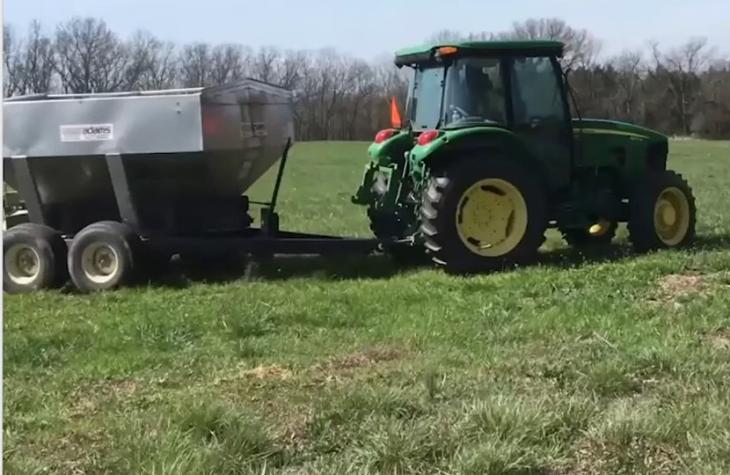COLUMBIA, Mo. – University of Missouri Extension economist Ben Brown and others predict 2025 corn prices will drop below $4.50 per bushel.
This is one of a series of articles by University of Missouri Extension specialists suggesting ways to reduce input costs in a year that many farmers may struggle to keep production costs below the price of corn.
John Lory, state nutrient management specialist for MU Extension, says all farmers should evaluate opportunities to reduce fertilizer applications in the 2025 growing season without reducing yields. “This is not a blanket recommendation for everyone to cut back on fertilizer,” Lory says. “But some farmers have an opportunity to significantly reduce fertilizer costs in 2025 without hurting yield.”
Lory says farmers who maintain their soil test levels near optimum face little risk of yield loss when postponing applications of lime, phosphorus and potassium for one to two years. “The philosophy behind our lime, P and K recommendations is your application is not increasing yield this year,” he says. “Instead, it is maintaining conditions in the soil to sustain high productivity. A benefit of having optimum soil test levels is that it’s not essential to apply P, K and lime annually to maximize yields.”
Why does this work? “The goal of current recommended soil test levels is to ensure no part of the field is insufficient in P and K. You have multiple years of buffer in the system where P and K soil test levels are medium to high,” says Lory.
Cutting back on these nutrients may result in lighter green color in early-season corn, but it should not reduce yields for farmers who maintain medium to high soil test levels, he says.
Another option is to run a strip trial to see if lower rates of P and/or K reduce yield. When the MU Strip Trial Program has run this test with cooperating farmers, it documented that zero P and K application to medium- or high-testing soils did not reduce yields, says Lory. A strip trial testing lower rates, or testing zero versus your rate, will reduce your fertilizer cost. You gain the benefit of knowing soil test levels on your farm.
All producers should be wary of lowering nitrogen applications to corn. “It is much easier to lose money by underapplying N than with P and K,” he says.
The corn value to nitrogen fertilizer cost ratio is still over 7. Underapplying N can be costly. A recent summary of MU nitrogen strip trials suggested that a significant number of the farmers were underapplying N, and a minority of farmers were overapplying N. “This means that a majority of the farmers cutting back on fertilizer N likely lost money,” says Lory.
But that does not mean there are no opportunities to improve nitrogen management. Increasing efficiency of nitrogen use can reduce fertilizer need. Lory recommends that growers split applications of nitrogen to increase N use efficiency. This strategy also provides an opportunity to adjust side dress N rate based on in-season sensor-based or model-based assessments of corn nitrogen status. In-season assessments of nitrogen also highlight parts of the field that are lagging in N supply.
For farmers who use manure as one of their nitrogen sources, MU Strip Trials show that trials with manure typically do not lose yield when the tested rate is less than the farmer rate. Farmers with manure should reassess if they are giving their manure enough credit as a nitrogen source.
For more information, see Lory’s results on cost/benefit of nitrogen fertilizer in MU Strip Trial Program, or read “Best Management Practices for Nitrogen Fertilizer in Missouri.”
